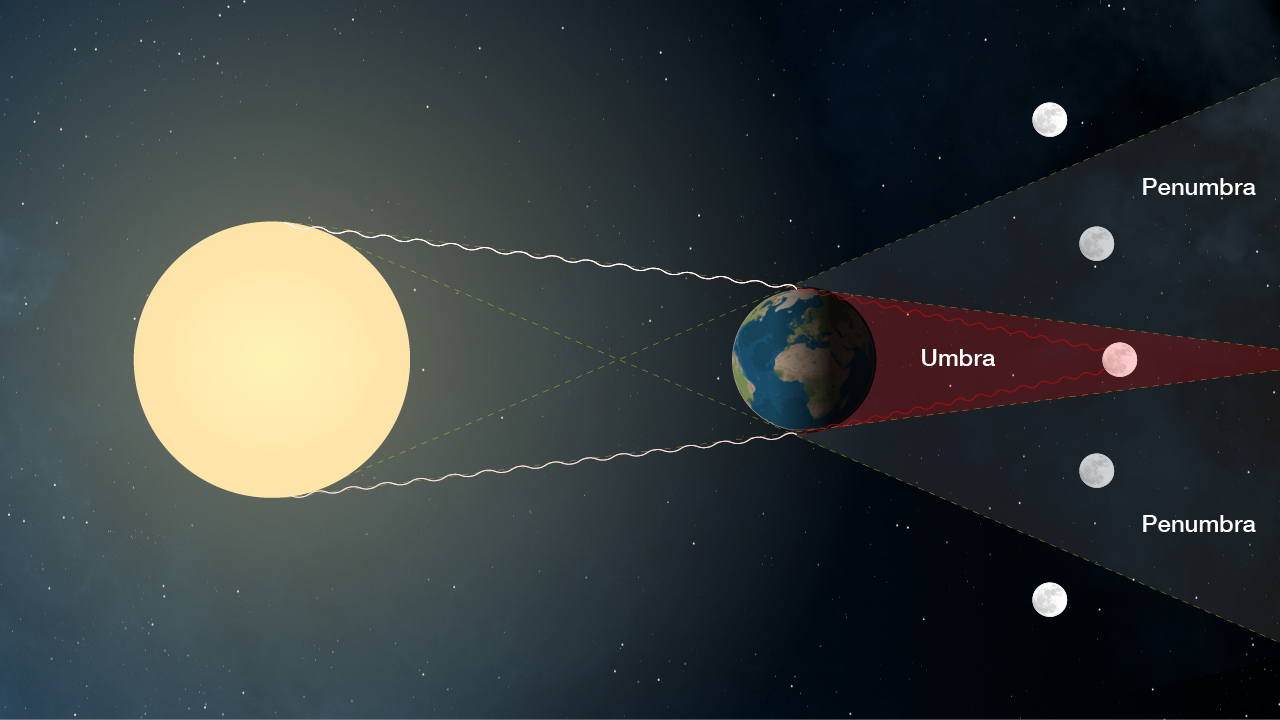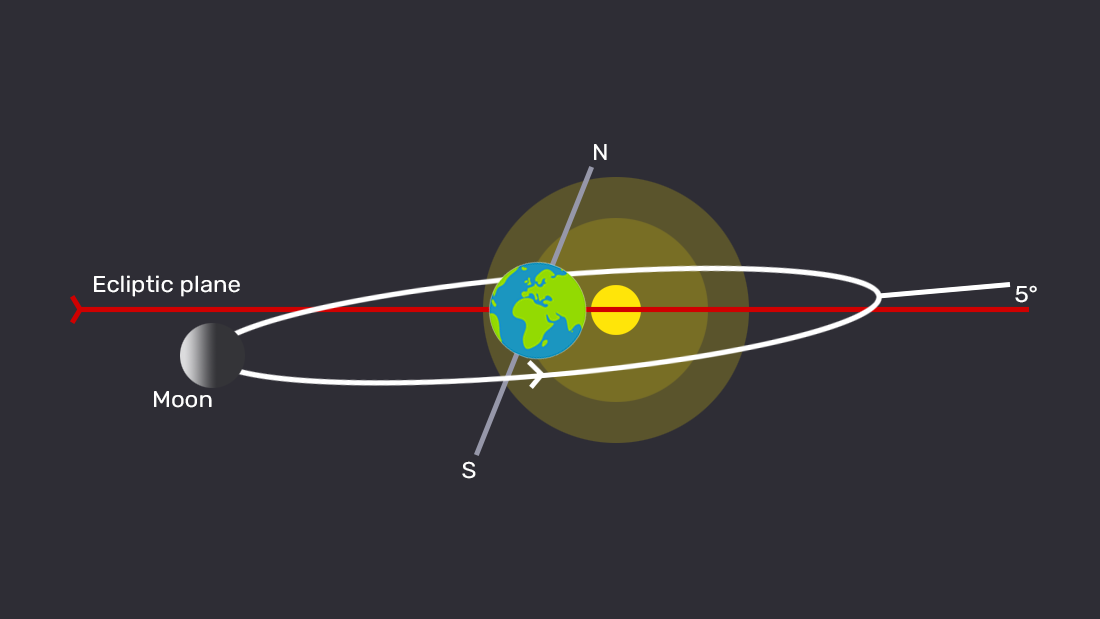There will be four eclipses this year, two solar and two lunar, but only the lunar eclipses will be total. Moreover, there will be 12 full moons this year, when lunar eclipses can occur, and 12 new moons, which can coincide with solar eclipses. Why are we getting ripped off?
For either type of eclipse to occur, the Earth, Sun, and Moon need to be in a near-perfect line. That certainly can’t happen when the Moon is half-full, at which point the lines from Earth to the Sun and Moon are at right angles to each other. It’s only when the Moon is full that it is opposite the Sun, allowing it to enter the Earth’s shadow. Similarly, only when the Moon is new is it on exactly the same side of us as the Sun, allowing the Moon to cast a shadow on Earth.
Many representations of this situation make it look like the plane in which the Moon orbits is perfectly aligned to the plane in which the combined system orbits the Sun. If this was the case, we would indeed get total lunar eclipses every month.

The position of the Sun, Earth, and Moon phases to create a lunar eclipse.
Image credit: NASA
However, the Moon’s orbit is angled by 5 degrees to the path of the Earth around the Sun. That means that most new moons it passes north or south of the Sun from our perspective. Likewise, when it comes to full moon, the Moon is usually passing north or south of the shadow, and is therefore unaffected.
What would happen if the planes aligned?
Perfect alignment would mean a total solar and total lunar eclipse every month (and twice in months like December 2024 with two new moons). However, we’d probably only see so many lunar eclipses we got bored of them.
You need to be on the Moon-facing side of Earth when a lunar eclipse happens to see it, so they’re visible from a little over half the planet (some places get the start or the finish but not the whole thing). So in this perfectly aligned scenario someone at a particular location would see one roughly every two months, clouds permitting, and the excitement would quickly fade.
On the other hand, the Moon is so small relative to the Solar System that its shadow barely reaches the Earth. Large areas of Earth experience a partial eclipse, but only a small area sees the Sun fully blotted out. The Earth’s rotation means this gets stretched over quite a long way, but it’s still a small portion of the planet.

The 5-degree angle of the Moon’s orbit around Earth compared to Earth’s orbit around the Sun means new and full moons just miss the shadow of the Earth.
Image credit: Barks/Shutterstock.com; illustration by © IFLScience
If the two planes were aligned, every month part of the Earth would experience this shadow, but the area would still be small. Moreover, without any inclination between the planes, the eclipse would only be total in the tropics, where the Sun passes directly overhead. Imagine how shocking it would have been for explorers reaching the tropics and encountering the blotting out of the Sun, something never witnessed at high latitudes. Today, on the other hand, eclipse tourism would be a big thing among people who would know a solar eclipse would never come to them.
Is the misalignment surprising?
It’s easiest to picture a Solar System in which everything lines up perfectly, so we might expect the lunar orbital plane to match that around the Sun, but that’s not really how things work.
The planets all orbit the Sun in planes that are reasonably closely aligned – the fact Pluto’s is so much more angled than the true planets was a forewarning of its demotion. Nevertheless, the alignment is not perfect. If the Earth and Venus’s orbital planes were exactly aligned we’d see transits of Venus frequently, instead of less than twice a century. Similarly, the gaps between transits of Mercury – up to 13 years – tell us there’s an inclination between those orbits as well.
What is more, we know the Earth itself is tilted relative to the orbital plane – it’s why we have seasons.
In fact, the intriguing thing is that the Moon’s orbit aligns much more closely with our orbit than it does with the equator. That’s not the case for the Martian moons Phobos and Demos, which never get far from the Martian equator. Similarly, Jupiter and Saturn’s larger moons have only tiny inclinations to their planet’s equators. Jupiter has so little tilt that doesn’t matter much – the moons are also quite closely aligned with its orbit. Saturn is a different matter, and confirms that if anything, we should expect the Moon’s orbit to be more tilted to our own orbital plane.
All “explainer” articles are confirmed by fact checkers to be correct at time of publishing. Text, images, and links may be edited, removed, or added to at a later date to keep information current.
Source Link: Why Isn’t There An Eclipse Every Full/New Moon?